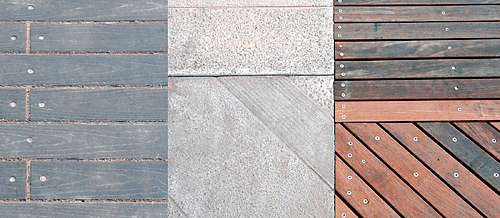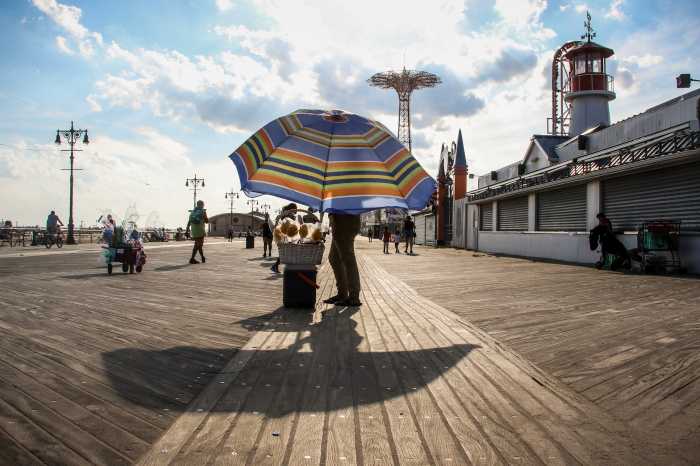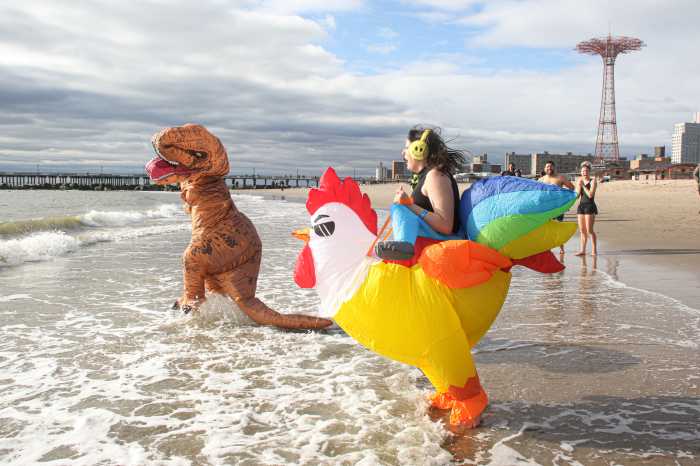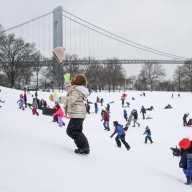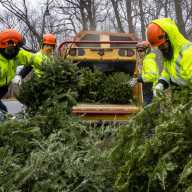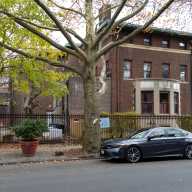It would be a nice idea — if it actually protected the wood.
The city landmarked Coney Island’s Riegelmann Boardwalk, but the designation won’t mean much since it doesn’t protect the walkway’s original wooden structure, neighborhood conservationists continue to complain. One local said the May 15 designation — made exactly 95 years to the day the Boardwalk opened — should have come with a promise from the city to maintain the its wooden structure and stop using repairs as an excuse to replace the planks with other materials.
“It’s a step in the right direction, but it would’ve been much nicer if it came with a commitment to keep it as a wooden boardwalk — Landmarks should’ve required the Parks Department to keep that promise,” said Ida Sanoff. “It’s not the Coney Island sidewalk — it’s the historic, iconic, Coney Island Riegelmann Boardwalk.”
Officials at the Landmarks Preservation Commission unanimously voted to designate the Boardwalk with scenic-landmark status, which protects its existence as a landscape and the general parameters of its physical presence, according to a spokeswoman, but does not protect the material of the Boardwalk from being ripped up and replaced with the concrete and recycled plastic slats — which since 2009 has been standard practice by the Parks Department, which has jurisdiction over the Boardwalk.
The landmarks commission will now join the city’s Public Design Commission in reviewing Parks’s plans for maintenance and material work, but the landmarks commission will only act in an advisory, non-binding capacity, while the design commission will continue to have the final say, according to the landmarks’ spokeswoman.
One local said he will launch a civic-conservancy group to lobby city agencies to preserve the wood, because the designation is nothing but a hollow gesture that will do little to actually protect the nature of the Boardwalk.
“As we’ve seen what landmarking means and doesn’t mean, it did spur us to think of other ways to think of how we may have some affect on what happens out here,” said Rob Burstein, the president of the Coney-Brighton Boardwalk Alliance.
Councilman Mark Treyger (D–Coney Island) — who led the years-long push to get the Boardwalk landmarked — seized the day to cheer the designation and the accompanying guarantee that some version of the Boardwalk would line the shore forever, calling the “beloved structure” both an “integral piece of Southern Brooklyn’s rich culture, history, and tradition” as well as a gathering place for the community.
“The Boardwalk is where our children, seniors, and families gather to enjoy each other’s company, where local residents leisurely stroll to relax, enjoying its breathtaking views, while others jog to stay fit,” he said. “Landmark status ensures that, no matter what, there will always be a Coney Island Boardwalk.”
But locals demanded that Treyger continue to fight for the future of the Boardwalk by lobbying the city to keep it wooden.
“The city and the Parks Department can expect the community to continue to defend the essential nature of the Boardwalk, and I think the engagement of elected officials is going to be critical,” said Andrew Sillen.
Treyger did not respond to an inquiry by press time.
Sanoff, Sillen, and other locals blasted the top brass at the landmarks agency at a February meeting in Coney Island and a public hearing last month, alleging that they were simply protecting stingy Parks Department officials who prefer $126-per-square-foot concrete to $144-per-square-foot wood. Landmarks reps replied with a promise that the alternate materials would still recall the appearance of wood.
But Sanoff said that wasn’t good enough, complaining that concrete wouldn’t mitigate the impact of a flood, hurricane, or superstorm like 2012’s Sandy, adding that the commission should hire a coastal-erosion engineer to consult.
“The design commission needs to realize that there are very unique conditions at play along the shoreline: there’s erosion, shifting sand, storm surge,” she said. “It would be nice if they had a [coastal-erosion engineer] on board as a consultant, at the very least.”
But a Parks Department rep insisted that concrete is the better choice to protect against future storms.
“The decision to use concrete is not only about being conscious of sustainability, but also adheres to our priority of creating a more-resilient structure that can stand up to extreme weather events like Sandy, as well as pedestrian use,” said Meghan Lalor.
Sanoff said locals simply want to protect historical essence of the Boardwalk, and that the traditional hardwood planks are a necessary part of that.
“This thing is a Boardwalk, and it wouldn’t be the same if it was made out of concrete,” she said. “There’s an actual feeling of walking on the wood versus walking on something that looks like wood.”


